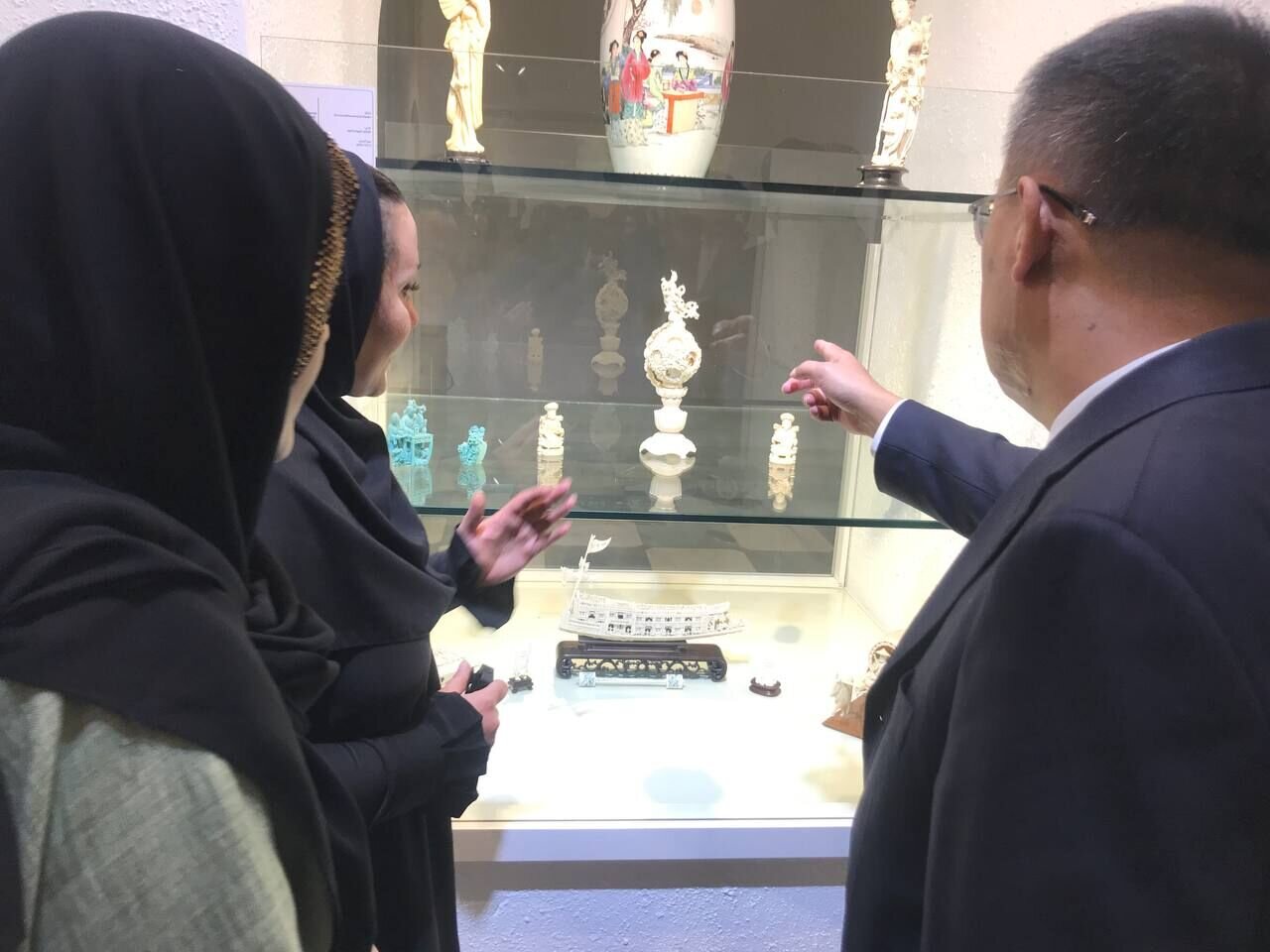Exhibition of Chinese artworks opens in Tehran

TEHRAN – A collection of Chinese objects, dating from the 17th to the 20th centuries, has been put on show at the Sa’dabad Cultural-Historical Complex, northern Tehran.
Iranian Deputy Tourism Minister Ali-Asghar Shalbafian, his Chinese counterpart Lu Ying Chuang, and some other officials and experts from the two nations attended the opening ceremony held on Sunday.
The exhibit features a selection of 80 most refined works of art (from the treasure trove of the former royal complex), the report said.
The works are made of porcelain, wood, semi-precious stones, ivory, satin fabrics, and silk thread, and they date back to the 17th to 20th centuries.
Among the highlights are objects decorated with “sgraffito” skill that first applies two or more layers of contrasting slip or glaze to a piece of pottery, then scratches the surface with a sgraffito tool to reveal the layers of color underneath.
According to organizers, the exhibition seeks to put the spotlight on the general culture of the Chinese people and the Far East from the distant past to the present day, the report said.
Earlier this year, Shalbafian called for closer tourism ties with China. Having cultural and historical commonalities, Iran and China have the potential to deepen tourism relations. They can even lay the ground for further progress in the tourism scene of the Eurasia region, the official stated.
He made the remarks at a tourism forum held in China, adding: “The people of Iran and China have many cultural commonalities with each other, and, for example, the Chinese Spring Festival (Chinese New Year) has many harmonies with the Iranian Nowruz.”
In 2019, the Islamic Republic waived the visa requirement for Chinese nationals willing to visit the country. The decision was made to attract more foreign tourists to the country; however, it was a unilateral measure, because Iranian tourists visiting China still need visas.
Covering 110 hectares of a mountainside parkland in northern Tehran, the Sa’dabad Cultural-Historical Complex used to be a royal summer residence during the Qajar and Pahlavi eras. The complex was initially established and inhabited by some Qajar monarchs in the 19th century. It has undergone further expansions from the 1920s until the 1979 Islamic Revolution. The site embraces a variety of buildings, some of which turned out to be house museums showcasing a wide range of royal families’ memorabilia, including lavishly made furniture, dishware, automobiles, carpets, and miniature paintings.
AFM
Leave a Comment